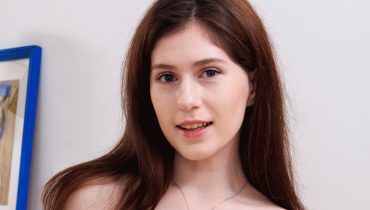When Camilla Edwards first downloaded a mental health app, she didn’t expect it to change her life. “It started with a single night of anxiety,” she recalls. “I couldn’t shut my mind off. Deadlines, bills, relationships — it all felt like noise.”
That night, she searched for something — anything — that could help her breathe again. What she found was an entire world of mental health apps for stress relief designed to turn smartphones from a source of stress into a source of calm.
From Overload to Awareness: Camilla’s Turning Point
Camilla had always considered herself high-functioning. A marketing consultant based in Chicago, she thrived on challenges, multitasking her way through corporate chaos. But over time, that energy became exhaustion. “I thought burnout was just part of adulting,” she jokes. “You drink coffee, you power through, you sleep when you’re dead.” Her humor fades when she adds softly, “Until my body stopped cooperating.”
She began experiencing physical symptoms — headaches, muscle tension, shallow breathing — all classic signs of chronic stress. Her doctor recommended meditation, but traditional mindfulness classes were expensive and time-consuming. “That’s when I found Headspace,” Camilla says. “I remember lying in bed listening to this calm British voice tell me to ‘just notice the breath.’ I laughed at first. Then I cried. Because it worked.”
That 10-minute session marked the beginning of a journey that transformed not only how she handled stress, but how she understood herself. “I used to think mental health was about fixing what’s broken,” she says. “Now I see it’s about maintaining what’s precious.”
The Rise of Mental Health Apps in a Stressed-Out World
Camilla’s story mirrors a global trend. According to the American Psychological Association, over 70% of adults report feeling stressed daily, and nearly half say technology contributes to that stress. Ironically, technology has also become part of the solution. The market for mental health apps for stress relief now exceeds $6 billion, with platforms like Calm, Headspace, Wysa, Happify, and BetterHelp leading the movement.
These apps combine behavioral psychology, neuroscience, and AI-driven personalization to deliver stress management tools directly to users’ pockets. “I didn’t have to drive to therapy or schedule appointments,” Camilla explains. “I could manage my anxiety between meetings.”
She began experimenting with different platforms — guided meditation on Calm, journaling on Stoic, mood tracking on Daylio, and AI chat support through Wysa. “Each app had a different personality,” she says. “Some felt clinical, some felt like friends. But they all reminded me of one truth: stress is not the enemy — ignorance is.”
How Technology Helps the Mind Heal
Modern stress relief apps work by retraining the brain’s stress response. Through mindfulness exercises, breathing guidance, and thought reframing, they help users shift from reactive to reflective thinking. The Harvard Health Publishing reports that regular mindfulness practice lowers cortisol, improves focus, and even strengthens immune function.
“The first time I used Calm’s ‘7 Days of Managing Stress’ course, I realized how disconnected I was from my own body,” Camilla says. “I didn’t know what it felt like to relax anymore.” The app taught her to observe her stress signals — tight shoulders, rapid heartbeat, restless thoughts — before they spiraled. “It’s like having emotional radar,” she explains. “You start catching storms before they hit.”
Many mental health apps now use AI to tailor interventions. Wysa, for instance, employs cognitive-behavioral techniques through chatbot conversations. “It asked me, ‘What’s really bothering you?’” Camilla recalls. “When I typed my answer, the bot helped me reframe it. I was shocked. It wasn’t therapy, but it felt therapeutic.”
Camilla’s Stress Management Routine
Today, Camilla has a system that blends digital tools with real-world habits. Her mornings begin with a three-minute gratitude meditation on Headspace. At lunch, she checks her heart rate variability through her smartwatch, syncing the data to her mindfulness app. Before bed, she journals in Stoic, using prompts like “What went well today?” or “What am I holding on to that I can let go?”
“It’s not about being zen all the time,” she says. “It’s about being aware enough to recover faster.” She calls it “micro-recovery” — moments of intentional rest that prevent full burnout. “I don’t wait until I break down to care for myself anymore. I check in daily, like brushing my teeth.”
What the Experts Say
Camilla’s approach aligns with what psychologists are now recommending. Dr. David Reiner of Mayo Clinic says stress relief apps can effectively complement traditional therapy. “For people who can’t access a therapist due to cost or schedule, digital tools provide immediate, structured support,” he explains. “They teach awareness and coping — the building blocks of resilience.”
However, experts also caution against total reliance. “Apps should guide, not replace, human connection,” Dr. Reiner adds. “The best outcomes happen when digital mindfulness is combined with physical self-care — exercise, nutrition, and social interaction.” Camilla agrees: “No app can hug you or make you laugh. It’s the balance that makes the healing real.”
How Mental Health Apps Support the Nervous System
Most people underestimate how chronic stress reshapes the body. “It’s not just in your head,” Camilla says. “Stress lives in your muscles, your gut, your sleep.” Apps like Breathwrk and Headspace use biofeedback and guided breathing to calm the autonomic nervous system — slowing heart rate and lowering blood pressure. “It sounds simple, but when I started doing deep breathing twice a day, I stopped getting tension headaches,” she says.
Research published by the Journal of Medical Internet Research confirms that digital mindfulness interventions reduce physiological stress markers as effectively as in-person programs. “It’s empowering,” Camilla says. “You realize healing doesn’t have to wait until your next appointment — it can happen now, with your phone in your hand.”
The Importance of Routine and Reflection
Camilla’s biggest discovery wasn’t about the apps themselves, but how she used them. “Consistency is medicine,” she says. “You can’t meditate once and expect enlightenment.” She treats her mental health apps like vitamins — small daily doses that compound over time. “Five minutes here, ten minutes there — that’s how you rewire a brain.”
She also learned that reflection amplifies progress. “I track my moods in Daylio,” she explains. “After three months, I noticed I was most anxious on Mondays and calmest on Fridays. So I stopped scheduling heavy meetings on Mondays. That insight alone was worth every minute I spent tracking.”
The Role of Community and Emotional Connection
Some apps go beyond solo meditation, offering peer support and therapist access. Camilla joined BetterHelp for virtual therapy sessions and used Happify for positive psychology exercises. “Having a professional check-in once a week kept me accountable,” she says. “But the real magic came from community.”
She discovered online mindfulness groups within these platforms, where people shared wins and setbacks. “One woman wrote, ‘I finally slept through the night after three years.’ I cried reading that,” Camilla admits. “Because it reminded me that we’re all in this together.”
The Cleveland Clinic notes that social belonging is one of the strongest predictors of mental health recovery. Apps that include community features may improve motivation and reduce isolation — especially for those struggling in silence. “The comments, the support, the shared stories — they’re digital hugs,” Camilla says. “And sometimes, that’s enough.”
What Camilla Learned About Balance
With time, Camilla stopped chasing “perfect calm.” “I used to think wellness meant no stress,” she says. “Now I know it means knowing what to do when stress comes.” Her new motto: Respond, don’t react. She credits the combination of digital mindfulness, breathing exercises, journaling, and human connection with transforming her life. “I still have bad days,” she admits. “But I recover faster. I forgive myself quicker. That’s growth.”
Practical Advice for Using Mental Health Apps
- 1. Start simple: Begin with one app that fits your style. Don’t overload yourself with six platforms.
- 2. Schedule consistency: Treat app sessions like appointments. Set reminders, use short daily routines.
- 3. Protect your privacy: Always check app policies and ensure they follow HIPAA or data encryption standards.
- 4. Combine online and offline tools: Pair your digital practices with real-world movement, hydration, and rest.
- 5. Reflect weekly: Journaling or mood tracking reinforces mindfulness and prevents relapse.
For those skeptical about digital healing, Camilla offers gentle encouragement: “Don’t underestimate small habits,” she says. “Five mindful breaths a day can change your life if you do it every day.”
Looking Ahead: The Future of Digital Mental Health
The next wave of mental health apps for stress relief is already here — integrating AI, wearable tech, and biofeedback for deeper personalization. Tools like Wysa now use emotion recognition to tailor coping strategies, while new platforms like MindDoc analyze voice patterns to detect anxiety before it’s felt. “It’s like having a psychologist in your pocket,” Camilla says. “But one who listens 24/7.”
Still, she reminds users to stay human in the digital era. “Technology can guide us, but it shouldn’t replace us,” she says. “An app can track your mood — but only you can change it.”
Camilla’s Final Reflection
“For me, these apps aren’t just stress tools — they’re anchors,” Camilla says. “When the world spins too fast, they remind me to pause.” She smiles when recalling how skeptical she once was. “I used to think mental health apps were gimmicks. Now they’re part of my survival kit.”
As she looks ahead, Camilla hopes more people see technology not as the enemy of mental peace, but as its unexpected ally. “We built machines to make life easier,” she says. “It’s time we used them to make life calmer too.”




























































